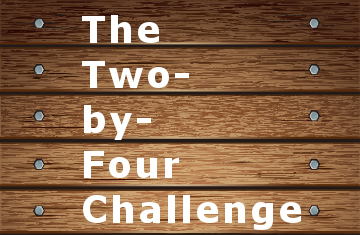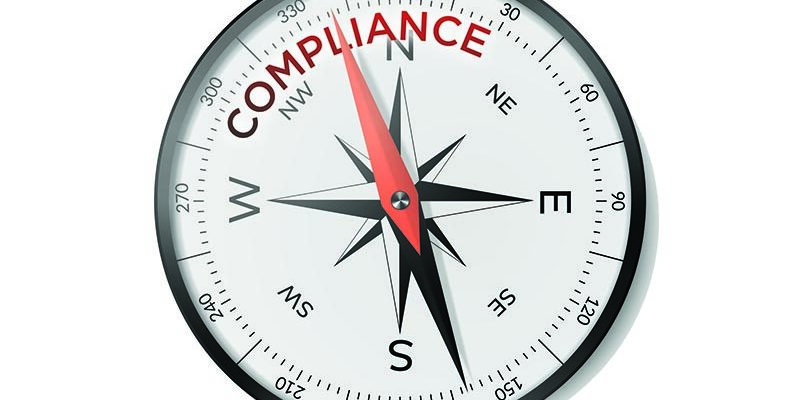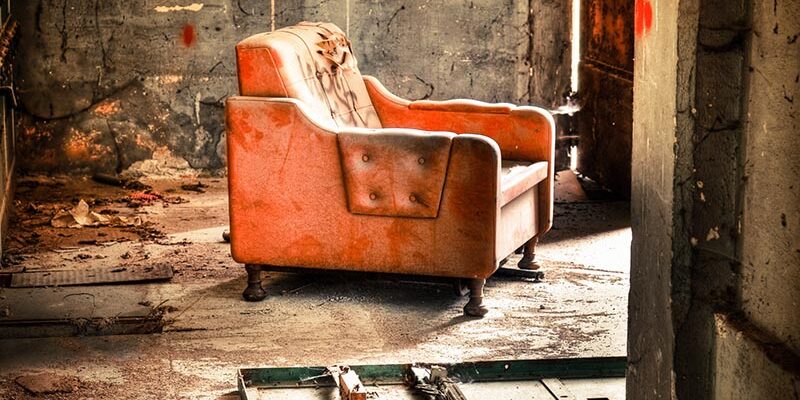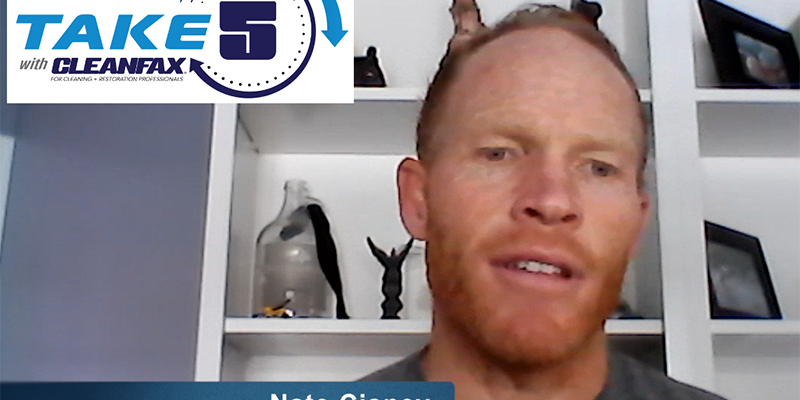The Two-by-Four Challenge

Find the keys to unlocking the mystery of mitigation.
The world of water damage restoration is a strange land.
To be certain, it can be full of conflict, undisclosed relationships and agendas — and risk — but it also is a land of great opportunity. If you want to serve your fellow man while reaching your earning potential, few industries can positively affect the lives, health and financial situation of as many people as that of the restoration professional’s industry.
In the coming months, I would like to have a series of chats with you, my peers, concerning our industry, our practices, how to protect/serve our clients’ needs, and the opportunities to grow as professionals and corporate entities. I hope, at the very least, that you come away with the sense that you aren’t alone in your endeavors to be excellent. Thank you for taking the time to think, dream and plan for success with me.
So many things go into making our businesses and careers successful. First, let me address a foundational element of fact that we struggle with in our day-to-day lives as mitigators. I believe that, when a carrier or insured understands and agrees with this foundational fact (and others I’ll cover in other issues), they will feel that we are knowledgeable, trustworthy and honest. When clearly established, the truth creates an opportunity to serve all parties with honor and skill — it also offers a substantially better bottom line for the restorer.
Defining the “wet” versus “dry” standard
While this topic is much larger than what I’d like to cover here, it is the foundation that we build our businesses on. Defining “wet” is about as fundamental as water damage gets, and this topic is a part of the knowledge that adjusters and insurance companies use every day to frame their decisions. Until it is established, nothing else can be put into context.
I wanted to find a real-world and practical way to reveal just how many facts we “assume” to be true but which we have never seen for ourselves. So, while at a recent conference, I asked a simple question of a group of industry professionals: How long does it take to make 4 feet of a 2 inches by 4 feet by 8 feet board wet if water enters only one end of the piece of wood?
Guesses ranged from one day to never. I then executed a simple study to demonstrate the answer: It took approximately 90 minutes to draw water 4 feet into the capillaries and wood fibers in that small piece of wood.
Surprised? You are not alone. Most professionals I have ever explained this to are as well.
The assumption that water cannot travel that far that fast is so elementary that everybody just feels they intuitively “know” it. If I might carry this logic a little farther, without even realizing it, the industry as a whole uses misinformation to determine whether you, the contractor, are competent.
Suggesting a structure could be wetter than expected, wet faster than anticipated or, heaven forbid, take more than four days to dry a structure can suggest that you are unqualified to do your job. But armed with this information, how could your world change?
A house built on misinformation cannot stand
Let’s face it, a little misinformation in your foundation of understanding affects every decision that follows. In this case, it affects the next series of decisions you face:
- What is wet? What is dry/dry standard?
- How fast did it get wet? How long did it take to reach dry?
- How much equipment should you use to dry the structure?
- How long should the equipment stay in?
- How much should be charged?
That entire chain of reasoning creates a person’s final perspective/opinion of value, and it is frequently interpreted through faulty reasoning. When we hear the opinion of a peer reviewer, adjuster or carrier that suggests a material was never really “that wet” or “should have been dry in X days,” how do we counteract that?
See for yourself
Learning these things 10 years ago changed the way I did business forever. So, I would like to challenge you to repeat the study/test I referenced above as well. In fact, it is a spectacular tool if you do adjuster trainings because nothing makes knowledge your own like being involved in its discovery.
Just as U.S. Treasury agents are only trained to recognize counterfeit bills by exclusively looking at the real ones, once you see the real thing first hand — negating the you will forever know a counterfeit when you see it.
The protocol
I first needed to build a construct that mimicked the orientation of a base plate assembly.
I went to my local home improvement store, got a piece of yellow/white pine and stored it inside of my office for approximately one month prior to its use to allow it to acclimate to interior vapor pressure levels. It was approximately 9 percent WME at the inception of the test.
I took the wood to my (unconditioned) shop area, which had an approximately 110gpp ambient level at the time of the study. Using two-by-fours, I created a rectangular frame on the ground.
I placed polyurethane over the rectangle and added about 2 gallons of water to the frame. I then placed a two-by-four into the bath with one end of the board sealed off so that water could not enter into it.
I screwed in 3.5-inch screws at 2 inches, 1 foot, 2 feet, 3 feet and 4 feet from the exposed end of the two-by-four. In my tests, I used remote monitoring sensors attached to the screws to get the readings, but any pin type meter will work if you touch the probes to the screws. While in the bath, the two-by-four was horizontal to the floor.
Water was added to the trough. The water entered the visible end of the two-by-four, and the entire board sat in approximately 1/4 inch or less of water. Readings were taken at five-minute intervals as water wicked up past the sensors installed at 2 inches, 1 foot, 2 feet etc.
The result
Again, it only took about 90 minutes to pull water 4 feet into that board. Do it yourself, and graph the results. You will watch water pass each sensor point in rapid succession as the material absorbs the water.
Get paid for the work actually done
In my mitigation firm, and for my consulting clients, collecting/presenting data like this has made an enormous difference in how much, and even if, we were paid. Confronting opinion and theory with fact has silenced all opinions with undisputable finality.
In our work, the knowledge of how quickly water absorbs into various hygroscopic materials and how long it takes to return it to its dry standard/pre-loss moisture content is invaluable to all parties in a loss. In fact, it is ultimately the most important discussion to have. It frames everything that follows it. Misinformation there leads to invalid conclusions, loss of trust, litigation, broken business relationships and, ultimately, loss of profits.
An understanding what “wet” really is and how and how long it takes a material to reach dry standard is extremely beneficial knowledge. I feel that without it, no reasonable discussion can be had.
End game
Now, would you have believed someone who said that you could soak 4 feet of a baseplate in about 90 minutes without seeing the data for yourself? Remember, seasoned industry professionals guessed times from two hours to never. Take the two-by-four challenge, and I believe it will positively affect your future in this business.
In the next installment, we will talk about another foundational fact that we all “know” — how long it takes to dry that piece of wood from the test. I will also introduce to you how documenting the process of wet to dry standard can produce a better project and greater revenues.
R. David Sweet is a Florida-certified general contractor who holds IICRC Master Water Restorer and Master Smoke Restorer designations. He is a current and past executive board member for ACAC and holds Council-certified accreditations of CMRS, CSDS, CIES and CIEC. With time as an independent adjuster and 15 years’ experience as the CEO/COO of a full-service restoration firm, expert witness and consultant, he brings a unique perspective to the mitigation, remediation, IAQ and building sciences fields, as well as the issues currently facing restorers. Today’s market demands increased efficiency, accountability and innovation to succeed. Sweet is passionate to see the day when science drives the services provided to clients, not opinions and is actively developing and teaching systems that create a transparent, fact-based drying/remediation process for the benefit of the insured, mitigators and carriers.












